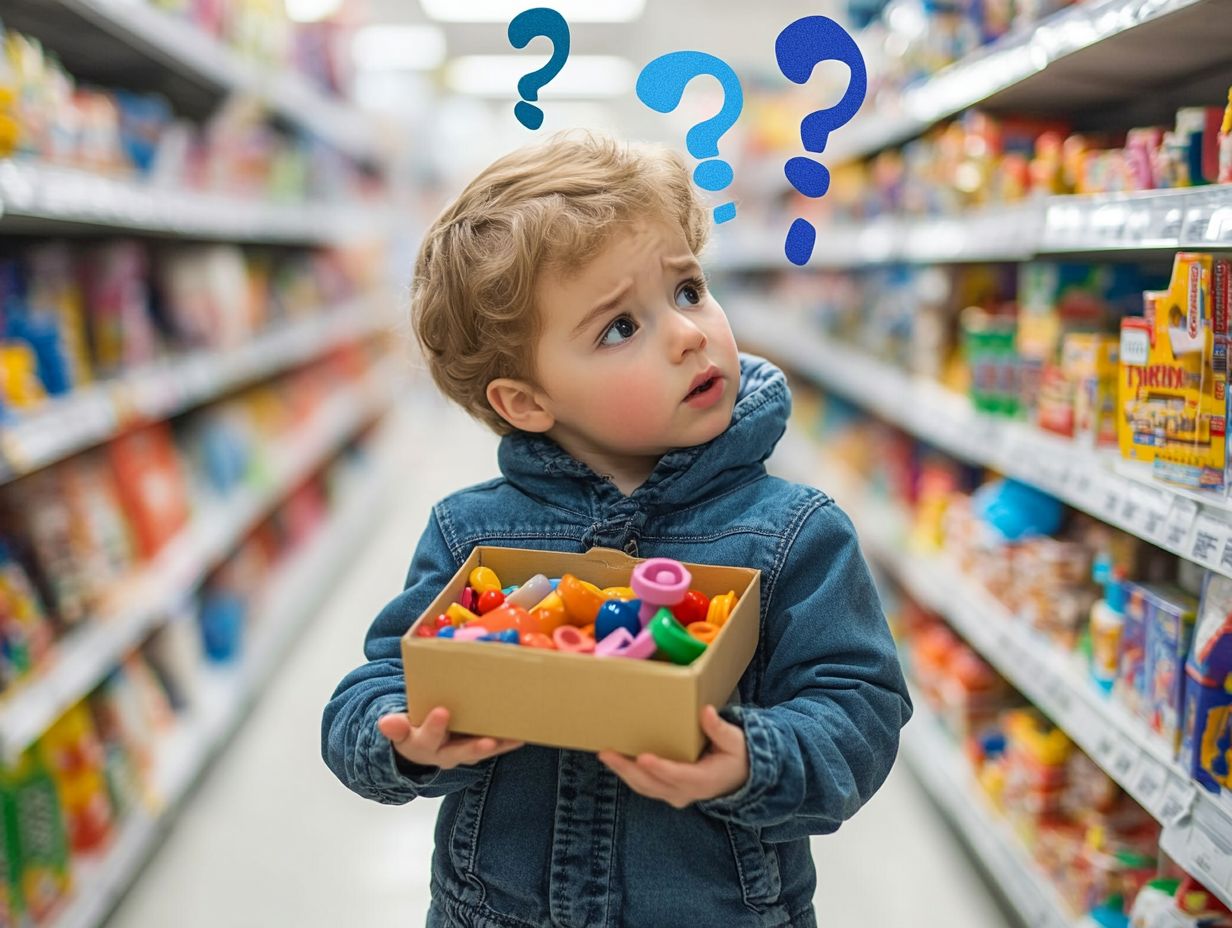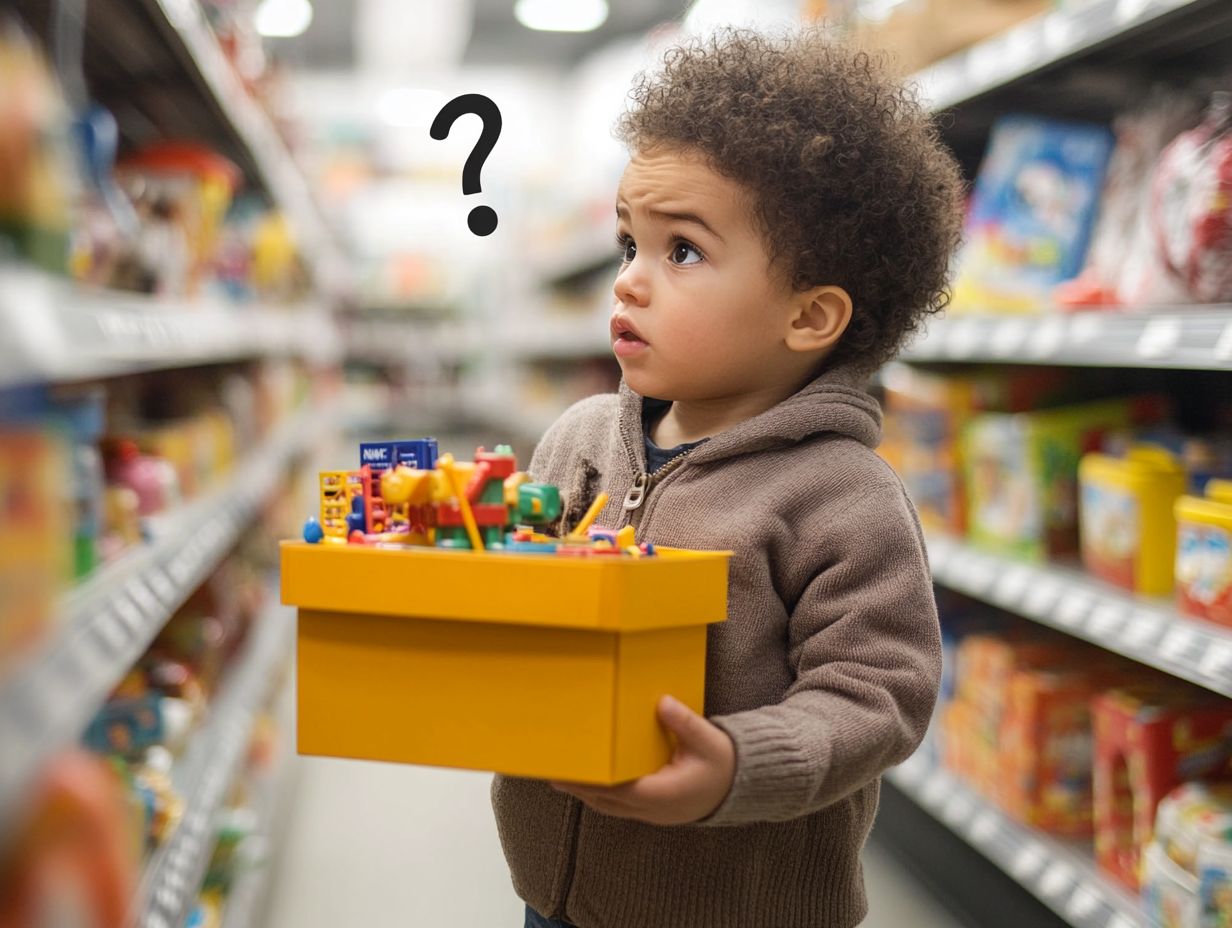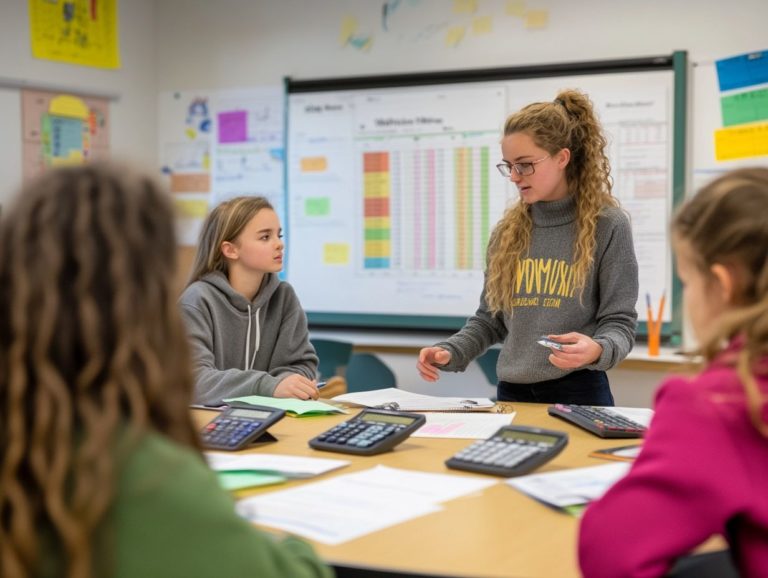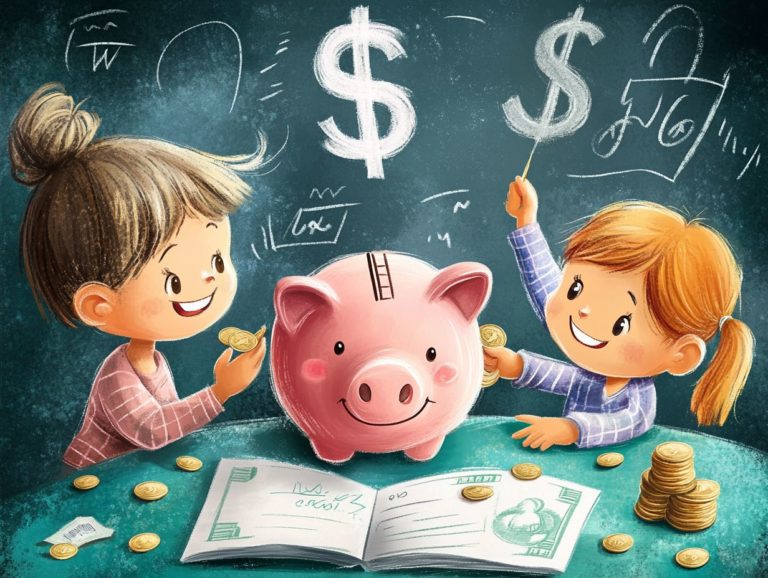What Questions Should Kids Ask Before Making a Purchase?

Neale Godfrey is the financial voice for women and multi-generations and a world-renowned speaker and author, who has inspired millions through her work. She motivates, trains, educates, and frankly, entertains by delivering her core message: Empower yourself to take control of your financial life.
Teaching kids how to make wise buying choices in our society that emphasizes consumption is essential.
Helping children think about the right questions before they make a purchase helps them learn. critical thinking and helps them understand the value of their money.
From evaluating the purpose of an item to considering its safety and longevity Kids should ask questions that help them make smarter decisions.
This article explores essential inquiries kids should consider, provides additional questions they might find helpful, and shares tips on developing responsible shopping habits.
Join us as we navigate the world of thoughtful purchasing for the next generation.
Key Takeaways:
Why Should Kids Ask Questions Before Buying Something?

Helping kids learn to ask questions before they make a purchase is important for teaching them about managing money and making wise decisions.
When children talk about their shopping decisions, they learn how to handle advertising aimed at them, which matters a lot for those younger than eight. In fact, according to a study by the American Psychological Association, television advertising is known to lead to unhealthy habits in children.
This helps them understand the importance of money and encourages them not to buy things impulsively, but to save instead. For more insights into cultivating thoughtful shopping habits, you might explore how to teach kids to save and track money. This habit sets them up for a lifetime of thoughtful shopping.
What Simple Questions Should Kids Consider Before Buying Something?
Before buying something, kids should ask themselves a few simple questions to build money skills and make good choices.
They should consider:
- Why they want the item
- How much it costs
- If it’s safe
- How long it will last
- If it’s suitable for their age
This can help them decide if they really need it, manage their money well, and avoid being influenced by ads. For additional guidance, take a look at our guide on teaching kids about money.
1. What Is the Item Used For?
Kids should first ask themselves what the item is meant for before buying it. This helps them determine if it aligns with their interests, needs, or savings goals, and if it contributes positively to their environment by preventing clutter.
When children consider their reasons for wanting a toy or item, they can make wise decisions that teach them about finances. For instance, a colorful, trendy gadget may catch the eye and tempt immediate buying, yet upon further reflection, it often lacks engaging functions or educational benefits.
Instead of buying these items on a whim, consider how they relate to a bigger interest-such as art, science, or working together-to make more careful choices. Teachers and parents can help by talking with kids about the importance of value compared to appearance, so they learn important skills for buying things later on.
2. How Much Does the Item Cost?
Learning the cost of items is important for kids because it helps them grasp the concept of money and manage their savings. This awareness can help them resist the urge to make impulse buys and understand the value of money, especially in a world filled with aggressive marketing targeting children.
To improve learning, children should be urged to look at and compare prices from various brands and shops. This can be both enjoyable and informative.
For instance, they can learn to use price tags effectively, looking for unit prices and identifying the best deals. Talking about sales and discounts helps show how these affect buying choices, allowing people to see if they are actually saving money or just spending on offers they don’t really need. According to a guide from North Dakota State University, understanding unit pricing is a practical skill that can lead to smarter purchasing decisions and significant savings over time.
This knowledgeable method helps develop better shopping habits and lays the groundwork for good money management later on.
3. Is This Item Safe to Use?

Safety is a significant consideration when purchasing any item, especially toys intended for children under eight. Kids should ask whether the product is safe to use and appropriate for their age, which can be assessed through consumer reviews and safety ratings that are designed to protect young users.
To properly assess safety, it’s important to think about whether products are suitable for a child’s age. This makes sure that toys are safe to play with and don’t present choking hazards or other dangers.
For instance, a toy intended for toddlers should not have small parts, while older children might enjoy more complex items. Safety certifications such as ASTM, EN71, or CE mark can provide a reliable benchmark for parents and kids alike. For additional guidance on toy safety standards and regulations, the Consumer Product Safety Commission (CPSC) offers detailed information on their website.
Children can find the opinions of others in online reviews helpful. These reviews can provide information about how long a toy lasts and any safety issues brought up by other families, which can guide their decisions and make their playtime fun and secure.
4. How Long Will the Item Last?
Thinking about how long a product lasts is important for kids who are learning about managing money and setting savings goals. A durable product is a better option and helps reduce waste. Make sure it is well-constructed by reading customer reviews or checking for quality indicators.
When teaching children to prioritize durability, emphasizing its role in long-term savings and value is essential. Strong products often last longer, so you don’t have to replace them as often, which can save you money in the long run.
To find out how long an item lasts, look at consumer reports, read customer feedback, and check warranty information. Encouraging young people to look at both prices and the quality of materials can help them focus on buying fewer, but better items.
This method helps people recognize the importance of choosing quality over quantity, promoting wiser spending habits.
5. Is This Item Age-Appropriate?
Determining whether an item is age-appropriate is essential for kids, as it impacts both their safety and enjoyment of the product. Knowing what is suitable for their age helps children deal with the advertising they see and gives them the ability to make choices that suit their growth.
This knowledge helps children think carefully about whether toys or items are appropriate by looking at things such as how complicated they are, safety warnings, and the age range suggested by the makers.
When kids are equipped with the knowledge of how these factors relate to their growth and interests, they become more adept at steering clear of products that might not serve them well.
By examining ads carefully, kids can interact more thoughtfully with them, make better decisions that improve their play time, and support their growth. In a market filled with attractive images and attractive promises, building this skill is important for promoting independence and ensuring every playtime is fun and meaningful.
What Other Questions Can Kids Ask Before Buying Something?
Children can improve their money skills by questioning their choices before buying something. They should compare different products, look for discounts, review return policies, and read customer reviews. To make these skills engaging, kids can benefit from interactive activities designed to enhance financial literacy.
This helps them make informed decisions and resist buying things on impulse due to ads. For an engaging way to practice these skills, try our 5-Minute Price Detective activity that challenges kids to think critically about their purchasing choices.
1. Are There Any Alternatives to This Item?

Thinking about other options for something they want helps kids make better decisions and learn about money. By exploring different options, children can find items that better fit their needs or budgets.
This study improves their ability to make decisions and helps them learn about the difference between value and cost.
For example, when deciding between a well-known backpack and a standard one, checking their durability and functionality can help you make a better purchase.
Looking at reviews or comparing prices on different sites helps them see that another brand might have better quality for less money.
By using this method, they understand the importance of being careful buyers, leading to smarter choices when shopping later on.
2. Can I Get a Discount or Use Coupons?
Looking for discounts or using coupons can be very helpful in helping a child save money, so it’s important to ask about them before making a purchase. Knowing about managing money involves learning how to find and use offers to get the most out of their cash.
When kids search for discounts, they learn the value of being wise shoppers. They might start by checking websites and apps that specialize in coupon aggregation, or visiting their favorite retailers’ websites where promotional codes are often prominently displayed.
Checking local newspapers or joining store loyalty programs can provide useful coupons. It’s essential to teach kids how to discern the best deals by comparing prices and looking beyond face value; sometimes, a larger discount might not result in overall savings when factoring in product size or quality.
Suggesting they schedule purchases to coincide with sales periods can increase their success, showing that wise spending is as important as saving.
3. What Is the Return Policy for This Item?
Learning about the return policy for an item is important for kids. It helps them make better buying choices and teaches them about managing money. Knowing the rules around returns can prevent unnecessary losses and encourage more thoughtful buying behaviors.
For instance, if children understand that a store offers a no-questions-asked return policy, they may feel more confident trying a new product without the fear of being stuck with an unwanted item.
Feeling safe can help children make better choices, as they may focus on buying good products that suit them.
When they realize that some stores impose restocking fees or have strict time limits on returns, they may become more diligent about evaluating their choices before committing to a purchase.
Awareness influences their shopping choices and teaches them about their rights and duties as consumers.
4. Can I Read Reviews or Get Recommendations from Others?
Checking customer feedback and consulting trustworthy sources can help children make informed purchase decisions. This method helps them learn more about finances by presenting other people’s experiences and opinions about a product, which aids in preventing impulse buying.
Learning from both good and bad feedback helps them improve their ability to think critically about product quality and details.
Parents can guide kids to visit well-known websites, such as review sites and online stores, where real customers share their experiences. Social media platforms and community forums are rich sources of opinions.
When interpreting reviews, it’s essential to look for recurring themes rather than focusing solely on extreme viewpoints. This method helps young shoppers see things from different viewpoints and make smarter decisions, resulting in responsible money management habits.
5. How Does This Item Compare to Similar Products?

Comparing an item to similar products helps kids understand the market and reinforces their financial literacy by showcasing the importance of value and quality. This evaluation helps consumers make better choices and avoid bad purchases.
When children learn to look at things like how long a product lasts, how well it works, the price, and what other people say about it, they get a better idea of what makes a product a good buy.
By examining different options, they develop critical thinking skills and become more confident in their ability to identify the best value. This process helps them make well-informed decisions and encourages a critical view of marketing statements.
These comparisons teach kids to be responsible by encouraging them to consider their budget and satisfaction with their purchases over time.
How Can Kids Learn to Make Wise Buying Decisions?
Helping children learn to make good shopping choices teaches them about money and saving for things they desire.
By figuring out the difference between necessities and desires, kids can make better decisions that benefit them both now and later. To enhance these skills, parents can use activities like the Price Detective to help children learn to compare prices and shop smartly.
1. Understand the Value of Money
Grasping the value of money is essential for kids as it forms the foundation for responsible spending and saving. By learning how money is earned and spent, children can better appreciate the significance of their savings goals.
Doing practical activities like handling a small allowance or joining in family budgeting talks can greatly improve their grasp of financial subjects.
For instance, when children see the direct relation between chores completed and money earned, they begin to appreciate the effort required to obtain financial resources. Involving them in age-appropriate decisions like choosing between toys or saving for a larger item encourages critical thinking about needs versus wants.
These experiences show how to handle money and build habits that last a lifetime, promoting self-reliance and wise decisions as you age.
2. Know What You Need vs. Want
Knowing the difference between what you need and what you want is important for making wise purchases and increasing your knowledge about money. By learning this difference, kids can prevent impulse purchases and make better decisions that match their savings objectives.
Recognizing the difference can help young people prioritize their spending and avoid unnecessary financial strain. For instance, a child may think they want the latest video game, but when they assess their budget, they might realize that their need for a new pair of shoes for school takes precedence.
To promote critical thinking, kids can practice asking themselves questions like, `Will this purchase help me reach my goals?’ or `Is this necessary for my daily life?’ This method encourages a thoughtful approach to spending and helps them understand their financial duties better.
3. Do Research and Compare Prices
Researching and comparing costs before purchasing teaches children to be wise buyers and strengthens their ability to manage their finances. This practice enables them to evaluate their options and make more informed decisions based on value and quality.
Young people can learn more about products they want by using online tools like price comparison websites and reading consumer reviews. These resources help them to identify reliable brands and assess which items deliver the best performance relative to their cost.
Learning to analyze reviews enables them to distinguish between personal opinions and factual information, enhancing their ability to make unbiased choices. These well-researched comparisons help them save money and learn important skills for making financial choices throughout life.
4. Ask for Advice from Parents or Trusted Adults
Kids can learn how to make good buying decisions and understand money better by talking to their parents or trusted adults. When children talk about their purchases with informed people, they can learn and improve how they make choices.
Families can talk about how to plan spending, choose what is necessary versus what is optional, and consider how their choices will impact later on.
Parents can actively involve their children in shopping trips, explaining how to compare prices and quality, or teaching them to read labels carefully.
Engaging in role-playing scenarios where children simulate buying experiences can also be an effective way to reinforce these lessons.
This practical method helps children become knowledgeable consumers and increases their confidence in handling their own money as they get older.
5. Practice Budgeting and Saving Money
Teaching kids how to manage their money and save is important because it helps them learn about finances and reach their savings targets. By learning to allocate their money wisely, children can make informed decisions that lead to successful financial outcomes.
To start, parents can encourage kids to set specific savings goals, such as buying a toy or funding a special outing.
Dividing these goals into smaller, manageable steps can make the process seem easier to complete.
It’s also helpful to introduce the concept of tracking expenses, where children can maintain a simple spending journal or use apps designed for their age group. This teaches responsibility and helps them see how their money is spent.
Adding budgeting to daily habits, such as using allowance for optional purchases or saving a portion, helps develop practical financial skills that will be useful as they grow up.

Neale Godfrey is the financial voice for women and multi-generations and a world-renowned speaker and author, who has inspired millions through her work. She motivates, trains, educates, and frankly, entertains by delivering her core message: Empower yourself to take control of your financial life.






